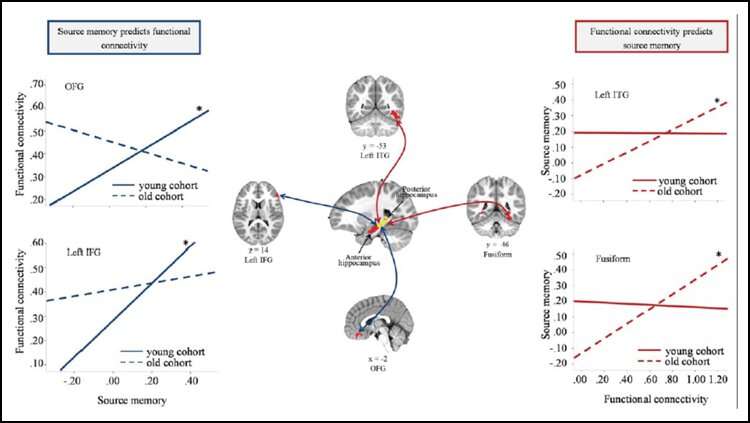Plots depicting the relations between source memory changes and functional connectivity in ROIs showing the main effects of source memory changes. IPL: inferior parietal lobule; SPL: superior parietal lobule; IOG: inferior occipital gyrus; ITG: inferior temporal gyrus. Credit: Geng et al., JNeurosci 2020
In early childhood, memory skills predict the strength of future brain connections, and conversely, the strength of early brain connections predict future memory acuity. New research published in JNeurosci highlights the complex, bidirectional relationship between brain function and ability during development.
It is difficult, if not impossible, to remember events from the first few years of life. A person's first long-term memories appear around age four, when memory networks begin solidifying.
Both early life experience and maturation of the hippocampus contribute to memory development, but the exact relationship between the two is unknown.
Geng et al. measured memory skills and resting brain activity in children aged four and six over the course of three years.
The children learned facts and were quizzed on both the fact and how they learned it (a source memory) one week later.
Source memory and synchronized activity between the hippocampus and other memory regions—called functional connectivity—improved with age.
Improvements in source memory over a year predicted functional connectivity in both younger and older children, but to a greater extent in younger children.
In addition, the level of functional connectivity at age six predicted the improvement in source memory at age eight.
In other words, changes in ability predict changes in brain function, particularly for younger children, while function predicts ability solely in older children.
More information: How Behavior Shapes the Brain and the Brain Shapes Behavior: Insights From Memory Development, JNeurosci (2020). DOI: 10.1523/JNEUROSCI.2611-19.2020
Journal information: Journal of Neuroscience
Provided by Society for Neuroscience























